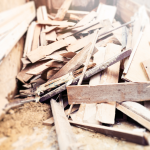Following a series of devastating natural disasters in recent years, health officials are warning Australians to be mindful of asbestos risks. Covid-19, flooding and bushfire crises could lead to an increased risk of mesothelioma, which was responsible for the deaths of more than 750 people last year.
Professor Sonja Klebe, of the Royal College of Pathologists of Australasia, explained that natural disasters increase the risk of asbestos-related diseases due to an increase in asbestos debris following the events, which can be extremely dangerous to health. The difficulty is that mesothelioma generally has a latency period of more than 30 years, making it difficult to identify the point of exposure, and a single exposure can result in the disease.
“Around 4000 Australians die every year from asbestos-related diseases, such as mesothelioma,” Klebe said.
“The Australian Mesothelioma Register shows that an increasing number of exposures are now linked to home building work, which increased significantly during the COVID-19 pandemic; there is also concern about potential exposure related to the recent natural disasters in Australia.
“During the bushfires, fire fighters had to go into burnt buildings, many of which were old farm buildings containing asbestos.
“The same goes for the recent flooding; there would have been asbestos floating around in the debris. It is less dangerous when it is wet, but people may still have been exposed through contaminated water during the clean-up operation.
“The effect of this may not be seen for years, as the typical latency between exposure and disease is more than 30 years.”
“We’re seeing around 700-800 new cases of mesothelioma each year. Unfortunately, it is a hugely aggressive cancer and the life expectancy for most mesothelioma patients is approximately 12 months after diagnosis.”
Those in natural disaster-affected areas are advised to follow the advice of local authorities, who will provide best-practice information for local residents regarding asbestos-related risks. This may include not re-entering damaged buildings, as is often the case following bushfires, or consulting with asbestos specialists following flooding to assess the risks following significant water damage accurately.



